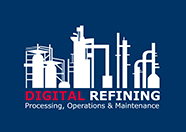- A European Refining Company
One of the oldest technologies, Fluid Catalytic Cracking with its immense flexibility and different operation modes turns out to be “life saving” for maintaining the refinery balance-off. Several parameters to be optimized, different feedstocks to be handled, one can run it in various modes according to needs. Most of the time for the sake of optimization unit is run at the very limits, i.e. very near to operating window boundaries which may arise some problems in the long run. Considering the isolation of air from a reactor and column filled with hot gas mixture by a pressure differential expressed in “grams/m2g”, the reliability and the safety issues are also of utmost importance. Being one of the oldest processes, the literature is full of operating manuals, emergency situations and troubleshooting procedures, however, running an FCC may still be challenging in numerous ways as our 46 year-old- FCC has been to us. In this session we want to share the real case scenarios we faced and the troubleshooting steps we have taken.
This is an interactive session. Tupras Refinery shares multiple scenarios: what they experienced and what they learned from it. After each scenario, the audience probes, asks questions and offers alternative suggestions or solutions. This is an excellent opportunity to learn from your peers.
TUPRAS offers these 18 scenarios that can be presented and discussed. Most are operational but some are process related. The attendees vote on the most valuable topics and discuss those first.
- Regenerator explosion disc deformation
- Removal of entrapped catalyst in reactor
- Plugging of e-cat dram
- Leak of catalyst to reactor during S/U through “so-called” closed slide valve
- Excess torch oil during S/U
- Deformation of spent catalyst slide valve body to the extent of leakage to atmosphere
- Severe erosions in cyclones and envelope application
- Temporary cold wall application due to leak in riser
- Leak from TI at the inlet of fractionator
- Leak at the bottom of fractionator bottom and clamp application
- Plugging of slurry nozzle
- Leak on vapor line due to a cold area
- Loss of control of slide valves due to a logic problem
- Plugging in reactor 2nd stage cyclone
- Effect of cyclone inlet deformations on slurry catalyst content
- Envelope application to the reactor body
- “Home-made” slurry recycle valve shafts
- Effect of spent catalyst deflector deformation on regenerator temperature distribution

















